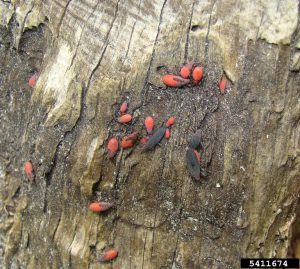It is officially Fall in Florida. Temperatures are dropping, the holidays are just around the corner, and *gasp* the notorious golden rain trees have finally set fruit. Oh, you know the one. The giant, sprawling trees with their light peach, paper lantern-esque displays—a botanical phenomenon your friends can’t stop posting about. While this show-stopping tree may be celebrated by many, it’s impossible to overlook it’s highly invasive characteristics. In fact, the golden rain tree (Koelreuteria elegans ssp. formosana) is currently listed by the Florida Exotic Pest Plant Council as a Category II invasive.

Native to northern China and Korea, the golden rain tree was introduced to Florida in the mid-1900s as a fast-growing ornamental for developed landscapes. Fast-growing is perhaps an understatement, as this species is capable of reaching heights between 25-50 feet with a 35-50 foot diameter canopy spread in a short period of time. Now, this rapid growth may initially seem advantageous for the home gardener. However, this rapid growth actually produces significantly weaker wood over time, which may be problematic during periods of high wind.

The peach-colored “paper lanterns” are in fact the fruit of the golden rain tree. Each fruit is comprised of a three-valved capsule containing seeds that can germinate in just a few days. This high germination rate, coupled with an abundance of seeds, means that these trees can spread to unintended areas, potentially disrupting native plant communities along the way.
The seeds of the golden train tree are also exceptionally attractive to the jadera, or soap berry bug (Jadera haematoloma). Although these bugs are harmless to humans, they will gather in the thousands to feed upon seeds on the ground, producing a red stain when squashed.

So, what exactly does it mean to be classified as a Category II invasive? The Florida Exotic Pest Plant Council defines these species as, “increased in abundance or frequency but has not yet been documented directly altering Florida plant communities”. Still, they may become a Category I invasive if further damage is demonstrated. Demonstrating such invasive qualities, there are are array of better tree options for your landscape that are both aesthetically pleasing and ecologically-friendly.
For more information on Florida-friendly or native tree alternatives for your landscape, be sure to check out the Florida Native Plant Society (FNPS) Plant Selection Guide, Florida-Friendly Landscaping Plant Selection Guide, and the Florida Association of Native Nurseries search tool to find the closest native plant nursery to you.
Interested in flowering trees for pollinators? Be sure to check out the Florida-Friendly Bee Gardens App and the Florida-Friendly Landscaping for Butterfly Garden App.
 3
3
